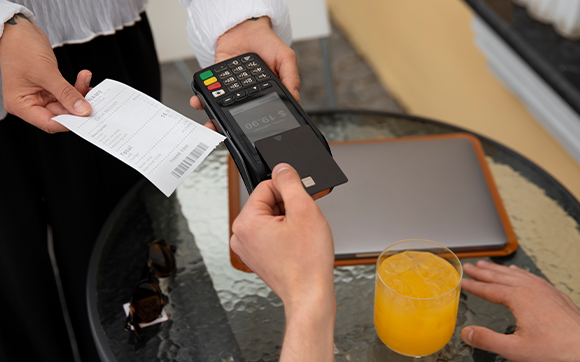In the past, merchants used to take your credit or debit card and swipe in the POS (Point of sale) machine. This technology was known as Magnetic Stripe technology and is still utilized in certain locations where merchants continue to use older POS machines.
The Magnetic Strip technology was invented during the 1960s-70s and found application in credit cards and debit cards. In terms of security, it was simpler than a modern plastic card with a magnetic strip attached. The magnetic strip stores personal information such as the card number, name, expiration date, and security pin.
With the extensive use of Magnetic Stripe technology in credit and debit cards, it became a target for a significant amount of data theft and fraud. Fraudsters started replicating the card data through Magnetic stripe card reader which was difficult to catch by the naked eyes. As fraudsters used this stolen data by making counterfeit cards or selling in online black market which in result is used in fake merchandise purchases.
To enhance the security and safety of card payments, three organizations partnered: Europay, Mastercard, and Visa (EMV). Previously, each of these organizations created separate standardization but in 1990’s they collaborated and started EMV standard and chip card technology. By creating the standardization of card industries, it helped individual customers, merchants, payment service providers, payment processors, card networks and the businesses.
What is EMV Chip or EMV Chip card?
The credit or debit card are embedded with a chip (EMV). Like the magnetic strip these chips stores information like card number, name, expiration date and security pin. Instead of swipe, customer insert the EMV chip card in the POS device/machine. The primary benefit of the EMV chip is that it generates a unique, one-time-use code (called a token) when inserted into an EMV reader at a POS machine. This token is then used to process the payment.
Consequently, merchants are unable to access or store the card’s data. The heightened security of these EMV chip cards is attributed to the fact that they are exclusively authenticated by specialized EMV readers. This authentication process ensures an overall safer and more secure payment experience.
One of the important features of these cards is that they are not easy to counterfeit, owing to the tokenization process that takes place during the payment process. EMV chips protect the card holders card details. EMV chips card started gaining attraction in 2015 from US . Merchant started shifting from Magnetic stripe reader to EMV readers as the EMV standard evolved.
Now, EMV chip card standards are handled, maintained and updated by EMVCo., which have included more stakeholders like American Express, Discover, JCB, and UnionPay. With the development of fintech, EMVCo developed contact and contactless standards such as 3D-secure, QR Codes and NFC to ensure safe and secure payment systems.
Recommended Reads: Marketplace Payment Solutions
What is NFC?
NFC (Near Field Communication) is a contactless payment method that can be used through mobile apps or cards. It uses RFID (radio-frequency identification) technology and communication protocols within 4 cm (about 1.57 in) or less. The consumer paying through these methods must place the card or mobile (for paying through mobile wallet app) close to the POS device. It does not require the discovery of device or synchronizing with the device like Bluetooth.
In nonprofessional terms, EMV chip and NFC look the same and seem competing, but both are two different technologies. EMV applies how the payment is made and NFC is how the devices are communicating. EMV credit cards are dipped or inserted but NFC equipped cards enable customer to “tap to pay.” Cards and mobile NFC devices use the same hardware infrastructure as contactless and contact EMV chip card transactions. Customer just needs to hover the card over the POS device.
However, the world of card payments is changing as a result of mobile payment wallet apps that make use of NFC technology. These apps store the card details in the form of tokens and through that token they use mobile devices as virtual cards for the payment.
Recommended Reads: What is a Payment Link & how can it Benefit for Small Businesses?
NFC is providing a mobile payment option where customers store virtual cards and not keep the multiple cards with themselves. The most used mobile wallet in the world is Apple Pay. Mobile wallets are more secure because they work through touch ID, Face ID or six-digit pin. So even if the mobile is stolen it will be difficult to open the wallet application.
As the growing demand of contactless payment, the transaction with physical cards at POS terminal will decrease. The customers do not have to keep all the cards with them. They can store them in the preferred wallet app once or ask for the virtual card from the bank. With the advent of payment wallets and NFC technology, banks will soon be issuing more virtual cards with enhanced security features.
Learn more about the latest payment security technologies and how to keep your money safe with SafexPay, the leading online payment service provider in the UAE.
Read our more blogs:
The Key Features to Look for in a Payment Gateway for Your UAE Business
Choose the Right Payment Platform in UAE for your business success




